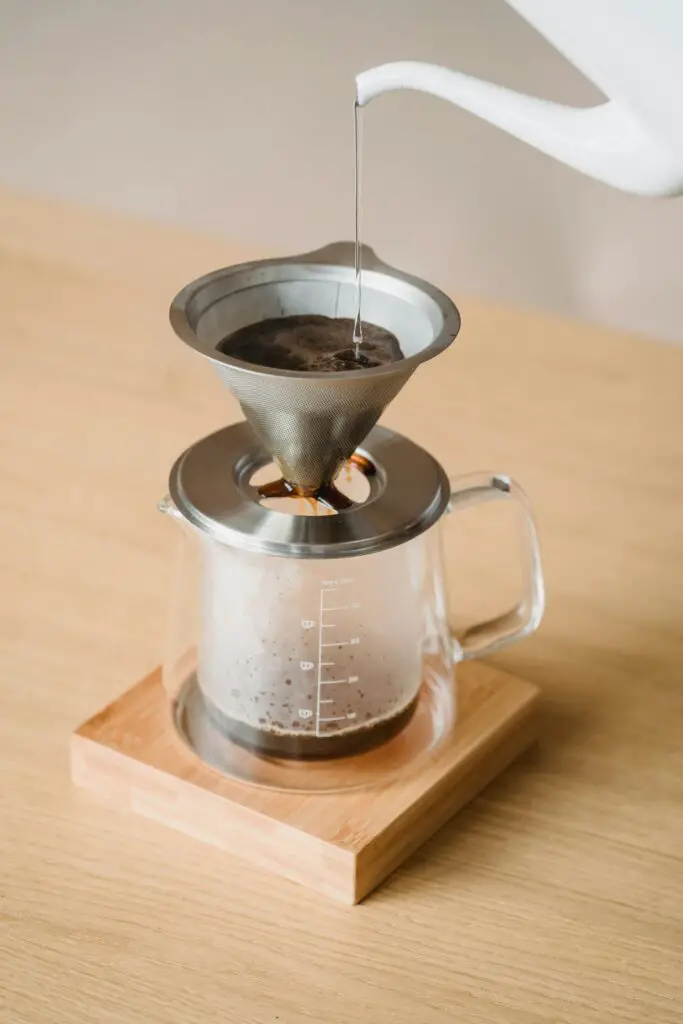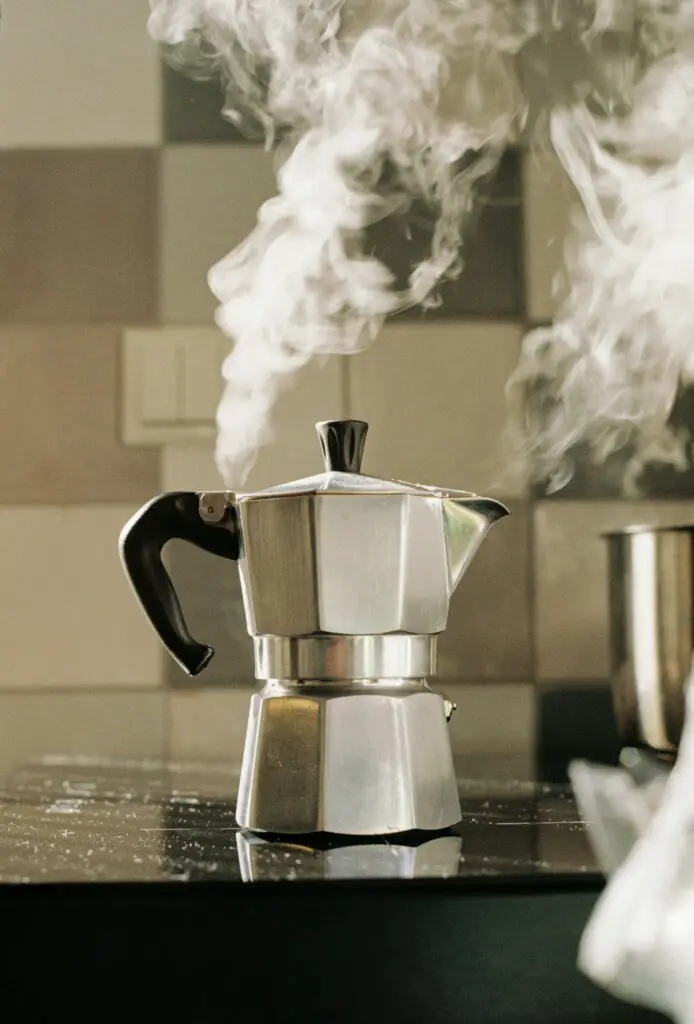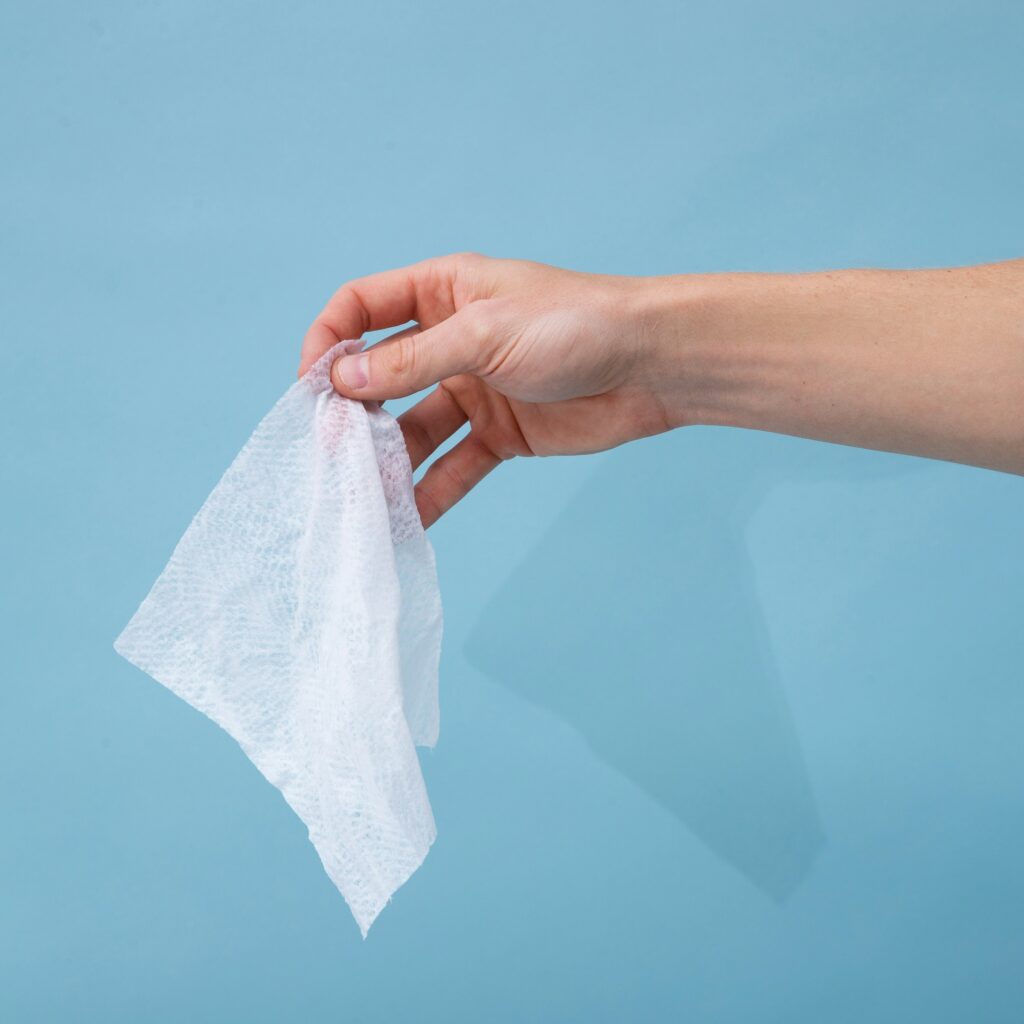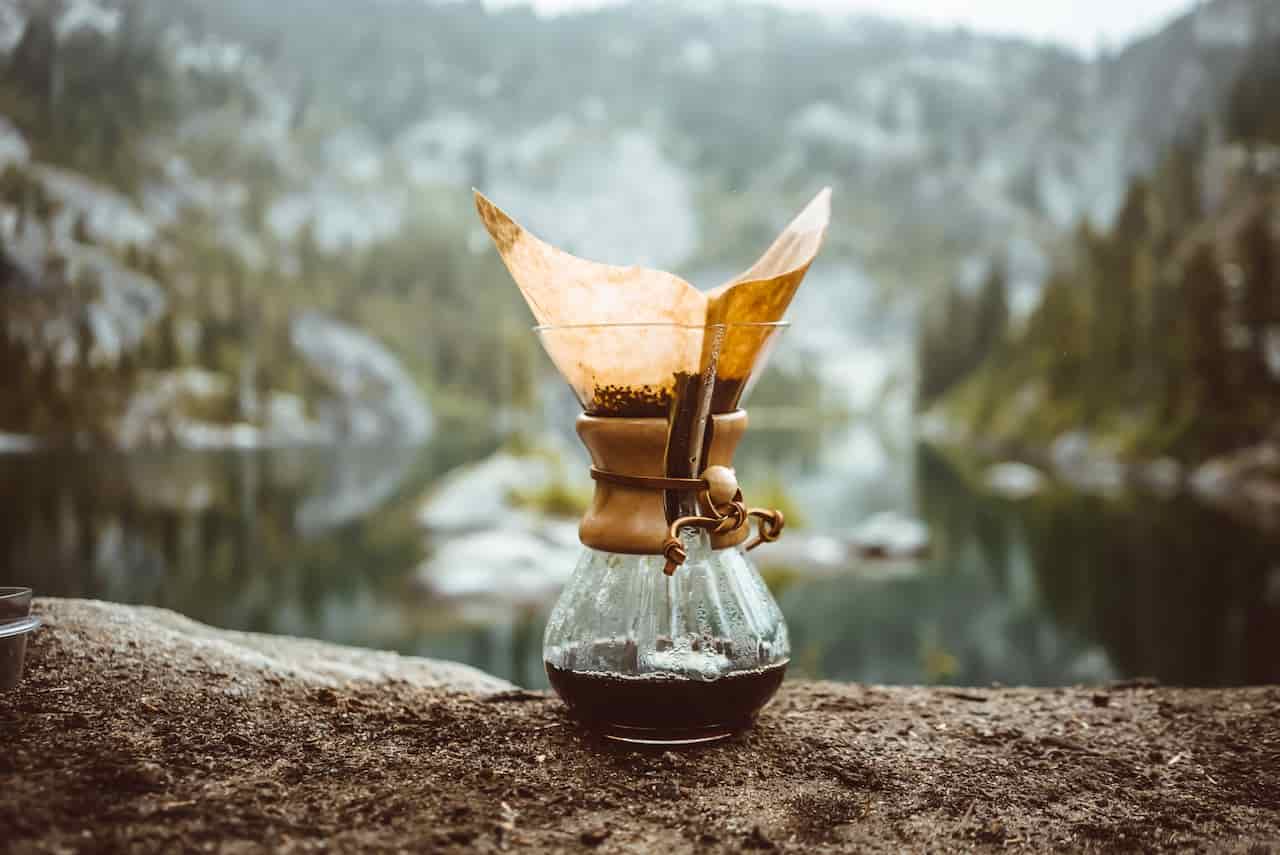Coffee filters play a crucial role in brewing a smooth, rich cup of coffee, trapping coffee grounds and preventing them from entering your cup.
However, sometimes you may find yourself without a filter or simply wanting to try something new.
Fear not, as there are several ways to brew coffee without a filter.
Let’s find out how!

Why brew coffee without a filter?
You might be wondering why anyone would want to brew coffee without a filter.
Well, there are a few reasons why coffee enthusiasts prefer to make coffee without one.
One of the main reasons is that it can change the taste and aroma of coffee.
When brewing coffee without a filter, the oils and small particles that are usually trapped by the filter will remain in the coffee.
These particles can add depth and complexity to the flavor of the coffee, creating a more robust and full-bodied cup.
Additionally, brewing coffee without a filter can be a great option when you are in a pinch or without a filter on hand.
For instance, if you are camping or in a hotel room without access to coffee-making equipment, you can still make a decent cup of coffee with some creative brewing techniques that do not require a filter.
1. Using a cloth or cheesecloth

Benefits of using a cloth or cheesecloth
Using a cloth or cheesecloth to make coffee is a simple and cost-effective way to brew coffee without a filter.
These materials are easily accessible in most households and can produce a strong, flavorful cup of coffee.
Moreover, using a cloth or cheesecloth can give you more control over the brewing process, allowing you to adjust the strength and flavor of your coffee according to your taste.
Steps to make coffee with a cloth or cheesecloth
To make coffee with a cloth or cheesecloth, you’ll need to start by boiling water and grinding your coffee beans to a coarse texture.
Next, place the cloth or cheesecloth over a jar or container and add the coffee grounds on top.
Pour the hot water over the coffee and let it steep for a few minutes before removing the cloth or cheesecloth, which will act as a filter.
The resulting coffee will have a slightly different texture than a traditionally filtered cup, but it will still be delicious and satisfying.
Tips for brewing with a cloth or cheesecloth
When using a cloth or cheesecloth, it’s important to choose a material that is breathable and porous enough to allow the coffee to filter through.
Avoid using materials that are too tightly woven, as this can result in a slow and uneven filtering process.
Additionally, be sure to thoroughly wash and dry your cloth or cheesecloth after each use to prevent any residual coffee oils or flavors from impacting future brews.
Finally, experiment with the number of coffee grounds and steeping time to find the perfect balance of strength and flavor for your personal taste.
2. French press

A French press, also known as a press pot or plunger pot, is a popular method of brewing coffee without a filter.
It consists of a glass or stainless steel cylinder with a plunger and a filter screen, which separates the coffee grounds from the brewed coffee.
The French press method allows for a rich and full-bodied cup of coffee, as it allows the coffee oils and flavors to infuse into the water.
Benefits of using a French press
French press coffee is known for its robust flavor and aroma.
The immersion brewing method and metal filter allow for a stronger and bolder coffee taste, as opposed to paper filters that absorb some of the coffee oils and flavors.
Additionally, French press brewing is quick and easy, making it a popular choice for home and office use.
Steps to make coffee with French press
To make coffee with a French press, start by boiling water and grinding your coffee beans to a coarse texture.
Next, add the coffee grounds to the French press and pour hot water over them.
Allow the coffee to steep for 4-5 minutes before pressing the plunger down to separate the grounds from the coffee.
Pour and enjoy your fresh cup of French press coffee!
Tips for brewing with French press
To achieve the best results with French press brewing, it’s important to use freshly roasted and ground coffee beans.
Avoid using pre-ground coffee, as it can result in a less flavorful and stale cup of coffee.
Additionally, experiment with the coffee-to-water ratio and steeping time to find the perfect balance for your taste preferences.
Finally, be sure to clean your French press thoroughly after each use to prevent any residual oils or flavors from impacting future brews.
3. Using a sieve or strainer

Benefits of using a sieve or strainer
Using a sieve or strainer to make coffee is a simple and efficient method that can produce a clean and smooth cup of coffee.
This method allows for the coffee grounds to be separated from the brewed coffee, resulting in a more refined taste compared to methods that do not use a filter.
Additionally, a sieve or strainer is a common kitchen tool that is easily accessible for most households.
Steps to make coffee with a sieve or strainer
To make coffee with a sieve or strainer, start by boiling water and grinding your coffee beans to a coarse texture.
Place the sieve or strainer over a cup or container and add the coffee grounds on top. Pour hot water over the coffee grounds and let it steep for a few minutes.
Finally, use the sieve or strainer to filter out the coffee grounds and enjoy your freshly brewed cup of coffee.
Tips for brewing with a sieve or strainer
When using a sieve or strainer to make coffee, it’s important to use a fine-meshed strainer or a sieve with a tight weave to prevent coffee grounds from passing through.
Additionally, be sure to rinse the sieve or strainer thoroughly after each use to prevent any residual coffee oils or flavors from impacting future brews.
Finally, experiment with the coffee-to-water ratio and steeping time to find the perfect balance for your personal taste preferences.
4. Using a percolator

A percolator is a type of coffee pot that uses steam pressure and boiling water to brew coffee.
It consists of a bottom chamber that holds the water, a top chamber that holds the coffee grounds, and a tube that connects the two chambers.
As the water boils, it is forced up the tube and over the coffee grounds, resulting in a strong and bold cup of coffee.
Benefits of using a percolator
Percolators are a popular choice for outdoor enthusiasts and camping trips, as they do not require electricity or filters to make coffee.
Additionally, percolators are known for their strong and bold coffee flavor, which can be adjusted by altering the coffee-to-water ratio and brewing time.
Steps to make coffee with a percolator
To make coffee with a percolator, start by filling the bottom chamber with water and placing the coffee grounds in the top chamber.
Place the percolator over a heat source and allow the water to boil.
As the water boils, it will travel up the tube and over the coffee grounds, resulting in brewed coffee. Adjust the heat and brewing time to achieve the desired coffee strength and flavor.
Tips for brewing with a percolator
When using a percolator, it’s important to use freshly roasted and coarse coffee grounds to prevent over-extraction and bitterness.
Additionally, be sure to monitor the brewing time and water temperature to prevent the coffee from becoming too strong or burnt.
Finally, clean the percolator thoroughly after each use to prevent any residual oils or flavors from impacting future brews.
5. Cowboy coffee

Cowboy coffee is a rustic and traditional method of brewing coffee that dates back to the days of cowboys and cattle drives.
It involves boiling water and coffee grounds together in a pot or kettle over an open flame, resulting in a robust cup of coffee.
Benefits of Cowboy Coffee
Cowboy coffee is a simple and convenient way to make coffee, especially in outdoor settings or without access to modern brewing equipment.
Additionally, the coffee grounds are allowed to steep in the boiling water for an extended period, resulting in a bold and full-bodied coffee flavor.
Steps to Make Cowboy Coffee
To make cowboy coffee, start by heating water in a pot or kettle over an open flame or stove.
Once the water is boiling, add the coffee grounds directly to the pot and stir to combine.
Let the coffee simmer for a few minutes, then remove it from the heat and let the grounds settle to the bottom.
Finally, pour the coffee into cups or a mug, taking care not to disturb the grounds at the bottom.
Tips for brewing cowboy coffee
When making cowboy coffee, it’s important to use coarsely ground coffee to prevent the grounds from passing through the pot’s spout.
Additionally, allow the coffee to simmer for a few minutes before removing it from the heat to ensure that the coffee grounds are fully extracted.
Finally, let the coffee settle for a few minutes before pouring to prevent the grounds from ending up in the cup.
6. Using a coffee sock

A coffee sock is a reusable cloth filter that is often used in place of traditional paper filters.
Made from cotton or nylon, coffee socks are typically placed in a drip brew basket or cone and filled with coffee grounds.
Benefits of using a coffee sock
Using a coffee sock is an eco-friendly alternative to paper filters, as they are reusable and easy to clean.
Additionally, coffee socks allow for a fuller and more robust coffee flavor, as they do not absorb the coffee oils or flavors like paper filters do.
Steps to make coffee with a coffee sock
To make coffee with a coffee sock, start by placing the sock in the drip brew basket or cone and filling it with coffee grounds.
Slowly pour hot water over the coffee grounds, allowing them to steep and brew.
Once the coffee is brewed, remove the sock and wash it thoroughly for future use.
Tips for brewing with a coffee sock
When using a coffee sock, it’s important to choose the right grind size for the coffee beans to prevent over-extraction or under-extraction.
Additionally, avoid overfilling the sock with coffee grounds to prevent clogging or slow dripping.
Finally, clean the coffee sock after each use to prevent any residual coffee oils or flavors from impacting future brews.
7. Using a moka pot

A Moka pot, also known as a stovetop espresso maker, is a brewing device that produces a strong and flavorful coffee similar to espresso.
The pot consists of three chambers, with one chamber holding water, another holding ground coffee, and a third chamber collecting the brewed coffee.
Benefits of using a Moka pot
Using a moka pot is a quick and easy way to make a strong and flavorful coffee without the need for expensive espresso machines or complicated brewing techniques.
Additionally, the resulting coffee has a rich and full-bodied flavor, similar to that of an espresso shot.
Steps to make coffee with a Moka pot
To make coffee with a moka pot, start by filling the bottom chamber with water and the middle chamber with finely ground coffee.
Assemble the pot and place it on a stove or heat source, allowing the water to boil and brew the coffee.
Once the coffee is brewed, pour it into a cup and enjoy.
Tips for brewing with a Moka pot
When using a moka pot, it’s important to use finely ground coffee to prevent clogging or slow dripping.
Additionally, avoid packing the coffee too tightly in the middle chamber to allow for proper water flow and extraction.
Finally, clean the moka pot thoroughly after each use to prevent any residual coffee oils or flavors from impacting future brews.
8. Using a paper towel or napkin

Benefits of using a paper towel or napkin
Using a paper towel or napkin is a quick and easy way to make coffee without a filter, using items that are readily available in most households.
Additionally, this method allows for easy clean-up and disposal of the used filter material.
Steps to make coffee with a paper towel or napkin
To make coffee with a paper towel or napkin, start by folding the material into a small square or rectangle and placing it in a sieve or strainer.
Next, add ground coffee on top of the paper towel or napkin, and pour hot water over the coffee.
Allow the coffee to steep for a few minutes before pouring it into a cup.
Tips for brewing with a paper towel or napkin
When using a paper towel or napkin, it’s important to use a sturdy material that will not easily tear or break apart.
Additionally, avoid using colored or scented materials that could impact the flavor of the coffee.
Finally, be sure to discard the used paper towel or napkin after brewing, as it should not be reused.
Conclusion
In this article, we have explored eight different methods for brewing coffee without a filter, including using a cloth or cheesecloth, French press, sieve or strainer, percolator, cowboy coffee, coffee sock, moka pot, and paper towel or napkin.
While each of these methods has its own unique benefits and drawbacks, the key to successful coffee brewing without a filter is experimentation and finding the method that works best for you.
Whether you’re looking to brew coffee while camping or simply want to try a new brewing technique, these methods offer a variety of options for getting your caffeine fix.
So go ahead and give them a try and see which one you like the best!
FAQ’s
What can I use if I don’t have a coffee filter?
If you don’t have a coffee filter, there are a variety of alternatives you can use to brew your coffee, including using a cloth or cheesecloth, French press, sieve or strainer, percolator, cowboy coffee, coffee sock, moka pot, or paper towel or napkin.
Is it OK to use paper towels as coffee filters?
While paper towels can work as a temporary solution, they are not ideal for long-term use as a coffee filter replacement.
Paper towels are not designed for use with hot liquids, and the fibers can break down and end up in your coffee.
Additionally, paper towels can impart a papery taste to your coffee.
How do you make coffee without a coffee maker or filter?
There are a few different ways to make coffee without a coffee maker or filter, including using a cloth or cheesecloth, French press, percolator, cowboy coffee, coffee sock, moka pot, or paper towel or napkin.
What happens if you don’t use a coffee filter?
A: If you don’t use a coffee filter, coffee grounds will end up in your cup, which can make your coffee taste bitter and gritty.
Additionally, if you’re using a coffee maker, the grounds can clog the machine and cause damage.
How can I make a homemade coffee filter?
To make a homemade coffee filter, you can use a piece of cheesecloth or a clean dish towel.
Simply place the cloth over a strainer and pour the coffee through it.
Can we make filter coffee without a filter?
A: Yes, you can make filter coffee without a traditional filter.
You can use alternatives such as a cloth or cheesecloth, French press, sieve or strainer, percolator, cowboy coffee, coffee sock, moka pot, or paper towel or napkin.
Can I use a sock as a coffee filter?
Yes, a clean sock can be used as a makeshift coffee filter.
However, make sure it is a clean sock and not one that has been worn or has any lingering odors.
Can I make filter coffee with normal coffee?
Yes, you can make filter coffee with regular coffee grounds.
The key is to use the right brewing method and to adjust the amount of coffee to your taste.
How do you make filter paper at home?
To make filter paper at home, you can use a piece of paper towel or a clean coffee filter.
Simply fold the paper towel or coffee filter into a cone shape and place it in your coffee maker.
How do you make a cloth coffee filter?
To make a cloth coffee filter, you can use a piece of cheesecloth or a clean dish towel.
Cut the cloth to the desired size and shape, and then use it to strain your coffee.
Can I use toilet paper for a coffee filter?
While toilet paper can technically be used as a coffee filter in a pinch, it is not recommended.
Toilet paper is not designed for use with hot liquids and can break down easily, resulting in a gritty cup of coffee.
Can I use cupcake liners for coffee filters?
Cupcake liners are not recommended for use as coffee filters.
They are not designed to withstand the high temperatures of hot water and can easily break apart, resulting in a messy and gritty cup of coffee.


